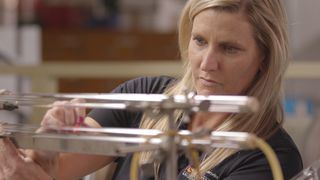
When other kids were blowing soap bubbles, Christine Roeger and her sisters were blowing glass bubbles. The bubbles would expand, big and shimmering, until they popped, sending tissues of glass as light as cling wrap floating to the ground. Typical childhood stuff — at least for the kids of a scientific glassblower.
Roeger still takes a certain destructive joy in blowing glass bubbles, but now, she’s a scientific glassblower in her own right, heating and shaping glass into custom scientific instruments. Roeger represents the third generation of her family to take up the career, following both her father and grandfather into a tight-knit community of science and glass.
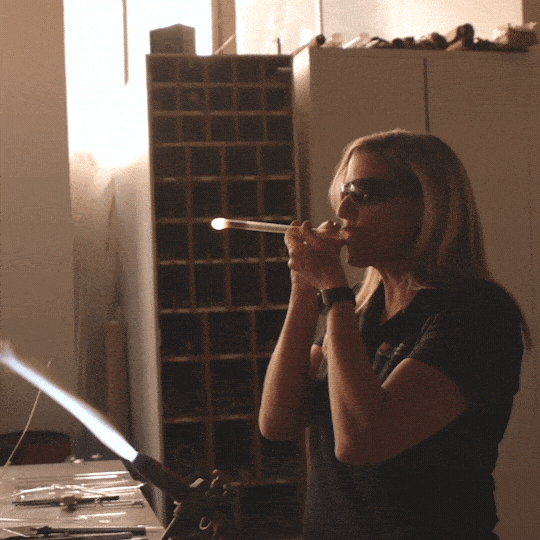
“Most people that don’t grow up in the scientific glassblowing world don’t even know scientific glassblowing exists,” Roeger says. It’s highly skilled, intense work to bend over flames and handle hot glass that can easily shatter. It’s a challenging calling, but it’s also a passion for people who are drawn to the combination of art and science in their work.
Scientific glassblowing has changed a lot since Roeger’s grandfather got into the business when he returned from World War II to find that his old job as a lens grinder had disappeared. Some things have stayed the same — you still learn on the job, and it helps to know someone in the trade to get your start — but now there are new techniques and research needs to design for. And far too many people like Roeger, who are about to retire, aren’t quite sure who will fill their jobs in the future.
Verge Science went to Arizona State University to meet Roeger to see one side of this profession in action and get a window into the scientific glassblowing world.
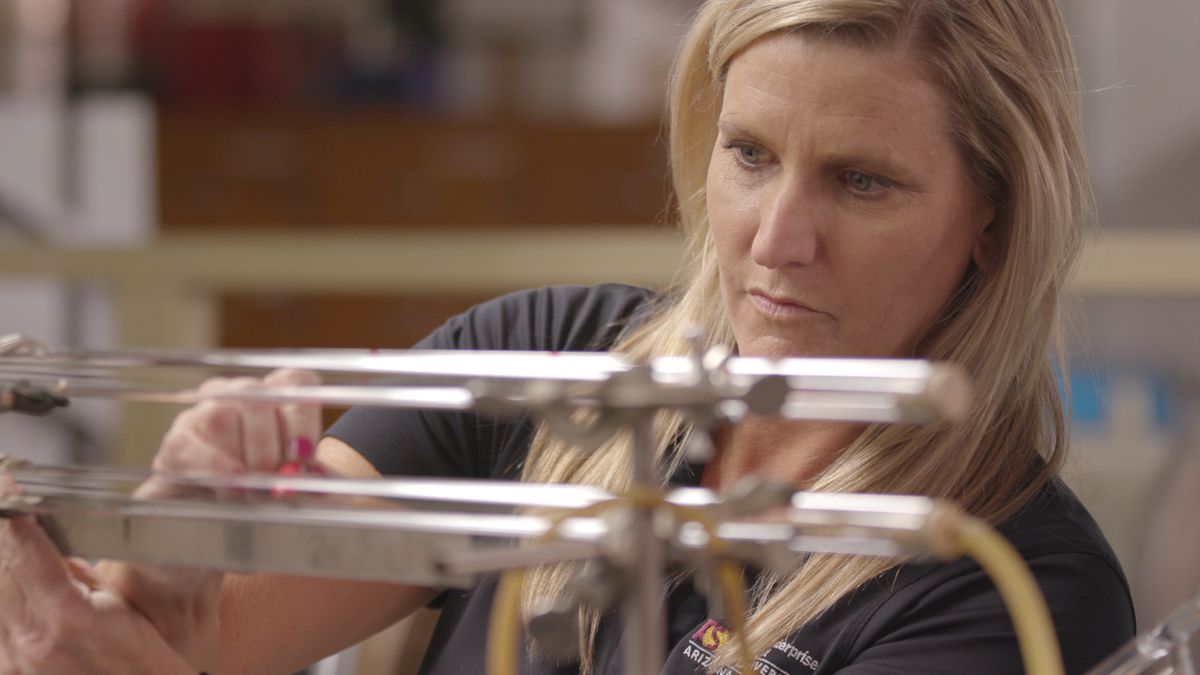
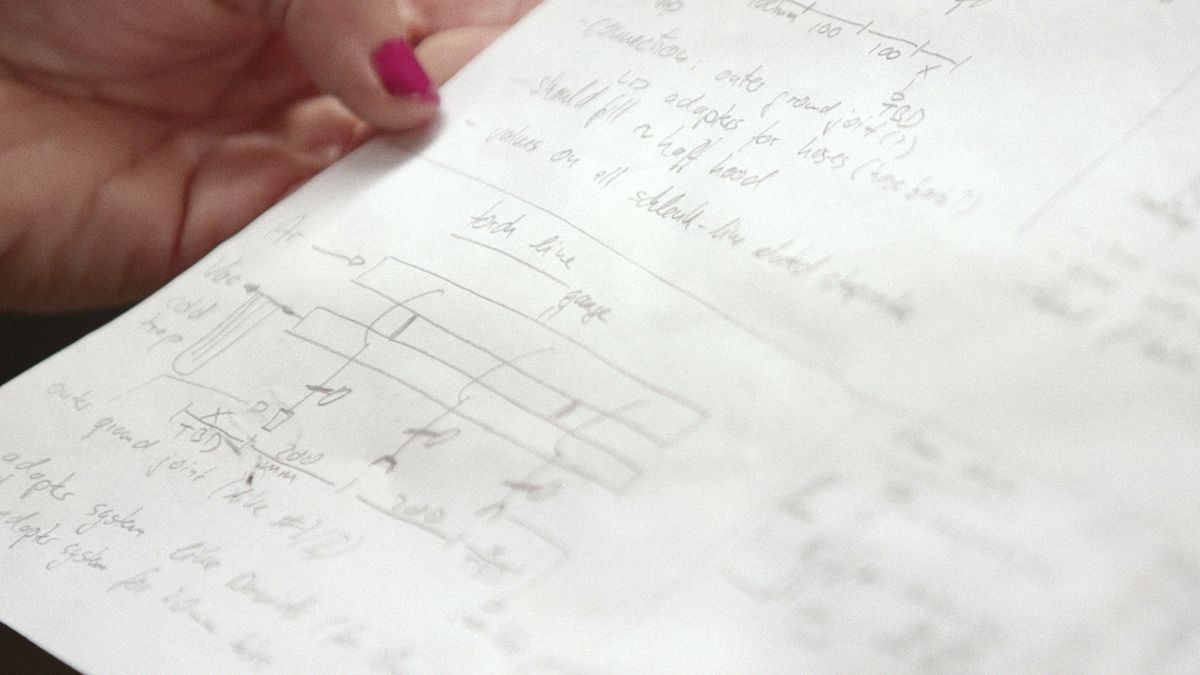
“It is a custom shop, so if you can buy a flask from a chem glass or a company, buy the flask. But if you need something custom-made, you come to me,” Roeger says. To make her creations, she heats glass tubes over a flame that’s usually at 3,000 degrees Fahrenheit. From there, she can make almost anything — from chambers that hold crickets to massive glass instruments that take up an entire wall.
In addition to learning how to shape glass, Roeger had to take chemistry courses in order to get her job. “If I didn’t have any background in chemistry, they would come in and I would have no idea what they’re talking about,” Roeger says. Every day, she gets some kind of new project, whether it’s a vacuum pump that takes 20 hours to piece together or a manifold that can be repaired quickly. While glass shops used to be the focus of chemists, now, biologists, engineers, and even students from art departments will come in with new projects for her. She’s never sure what each day will bring.
“I’m working with fire every day, and knives, and glass. I’ve had my fair share of cuts and burns. But, knock on wood, I’ve never needed any stitches,” Roeger says. That’s fortunate for someone who teaches a class on glassblowing that’s affectionately nicknamed “Burn and Bleed 101.”
It’s an extremely metal name for a class with an extremely deliberate purpose: “to give students an idea of what I can do for them as a glassblower and what they could do for themselves in their lab” Roeger says.
Roeger mostly works with grad students across the university’s four campuses, designing custom instruments for their projects. If she wasn’t there, they’d have to order a custom piece from a distant shop, which would take weeks to arrive. Roeger can typically put something together in a few days and for a lot less money. That also comes in handy for repairs. A grad student would always prefer a $35 repair fee to a $1,000 replacement from a catalog.
“Having a glassblower on campus is fundamentally important to our ability to innovate because we need to be able to fail quickly and make new mistakes,” David Wright, a researcher at ASU, says. “Things break all the time. It’s nice that she can repair them for us in a short turnaround time, but also she can collaborate with us about what’s possible that she can do in the glass medium itself, almost like an artist.”
Art and scientific glassblowing aren’t that far apart, though scientific glass requires far more precision and has much less room for error. Roeger’s job is focused on science, but she has had students go into more artistic pursuits — one of them made a neon cactus that sits in her office today. Roeger would like to do more art when she retires in a few years — maybe jewelry or something with wine bottles. “Glass blowing is always going to be a part of my life,” she says.
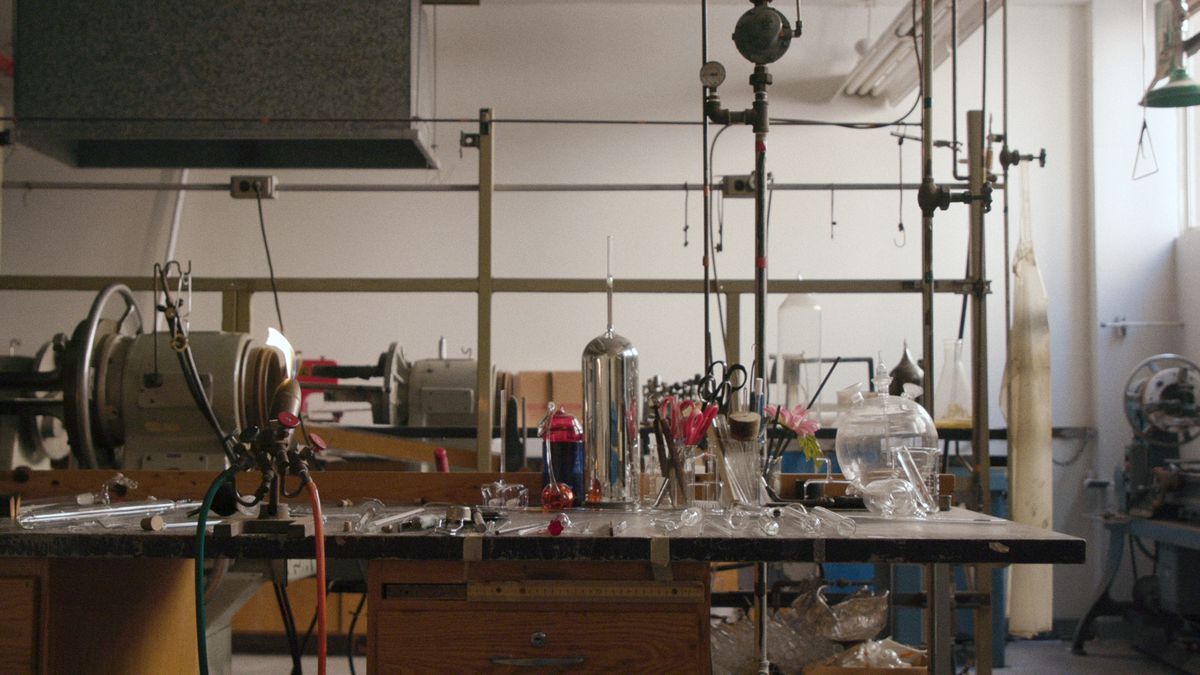
Glassblowing has been part of her life for a long time and part of her family’s life for much longer. Roeger and her dad started working with glass when they were around 12 years old. “My father would work nights and weekends, and I would go out and do little things for him,” Roeger’s dad, Mike Wheeler, says. He’d cut lengths of glass tubing, clean up the bench, and blow bubbles with his dad. Eventually, he became an apprentice, then a master glassblower, leading ASU’s glass shop for just over 30 years. Roeger took over from him when he retired.
“It’s not really a family business. We’ve provided a service to a lot of universities and companies over the years between my father and myself and Christie,” Wheeler says.
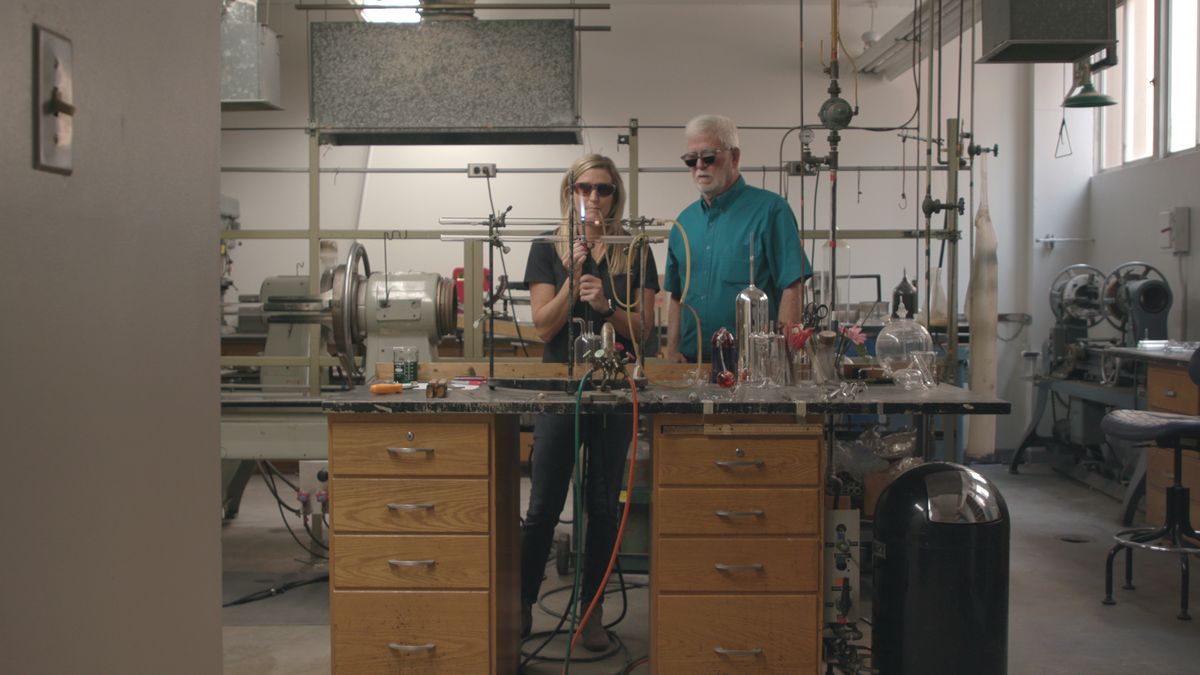
Passing down a career might seem odd to some people, but in scientific glassblowing, it’s almost the norm. “Ninety percent of the students I get know somebody that’s doing it, or know someone who has done it or turned them on to it on the internet,” Bob Russell, the instructional chair of the Scientific Glass Technology program at Salem Community College, says. “The other 10 percent just thought it would be a fun thing to do.”
Salem Community College is the best-known scientific glassblowing school in the country, and it attracts people from all over the world who are interested in learning the craft and might not have grown up blowing glass bubbles in the yard. But as Russell says, once you get your start in the career, “everybody pretty much knows everybody. If you don’t know somebody, you know somebody who knows them.”
There are some commonalities between the everybodies who make up the field. Nearly all are members of the American Scientific Glassblowers Society, the ones who got a degree in glass almost all went to Salem, and far too many of them, like Roeger, are retiring. Many are looking for people willing and able to take their spot.
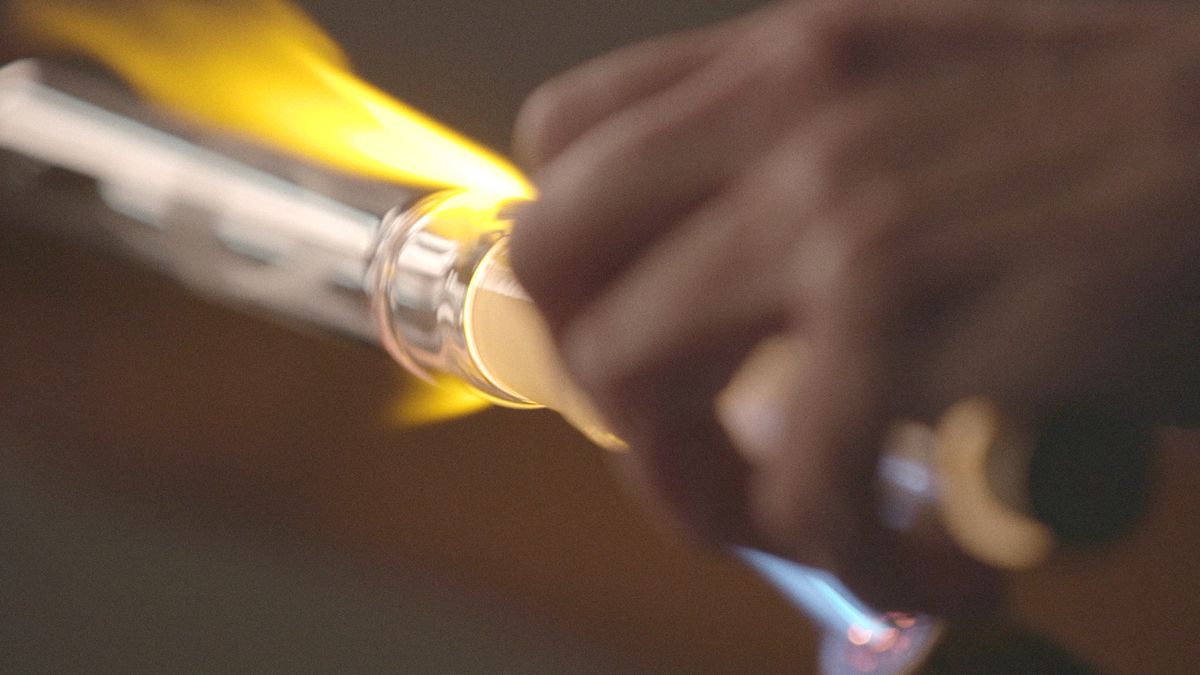
“One of the things we’re facing right now is the knowledge void between newer glassblowers and the older glassblowers,” Russell says. It can take years, if not decades, to master glassblowing techniques and to master the equipment that they use. That’s true in academia (some of the lathes Roeger uses are from the 1980s) and in industry where many other scientific glassblowing graduates go.
“In some ways, it’s scary, because for a few years, when I was a student, it was really really really hard to get a job, because all the positions in production facilities, and in universities, and in national labs were all filled with people with years and years of seniority,” says Katie Severance, an alumna of Salem. Severance is now a foreman at a glass production company called AGI near Philadelphia, and he teaches at Salem.
Now that those people with so much seniority are retiring, it’s causing a seismic shift in the industry. “In the past five years we’re seeing an emergence of places realizing this and really lighting a fire under their ass, if you will, to get new fresh blood in there to get trained,” Severance says. It takes years of training for a scientific glassblower to really learn the ropes, so as people retire, there’s an increased demand for new apprentices.
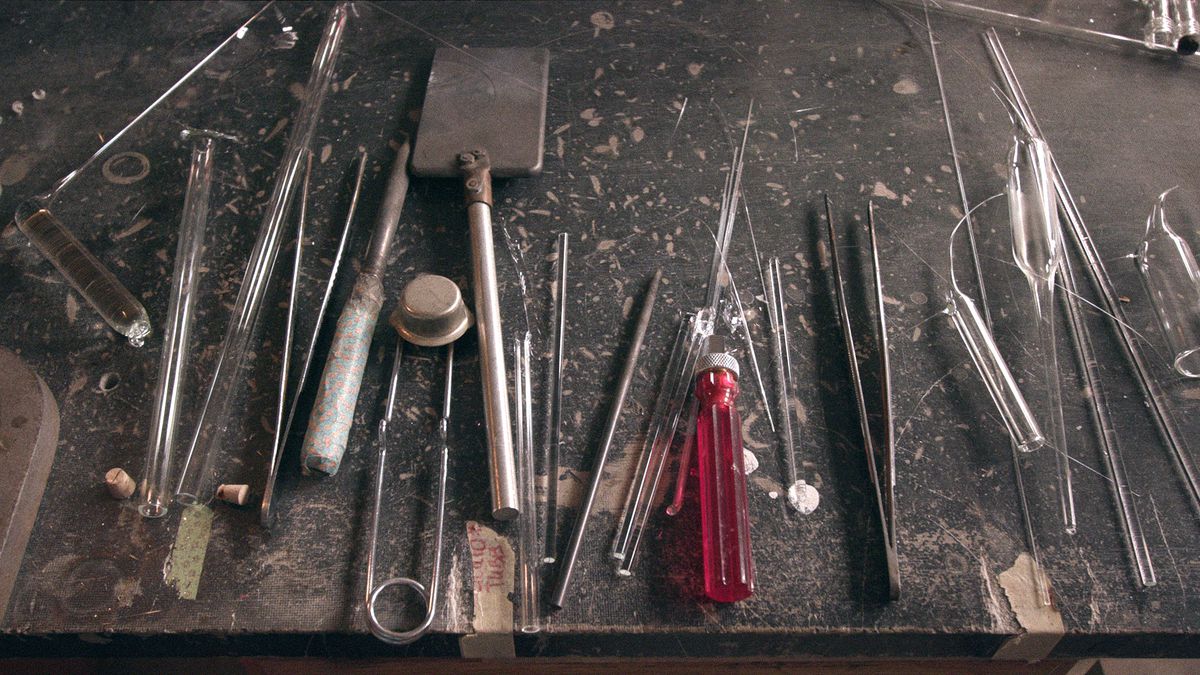
There’s also a demand for new apprenticeships. Roeger has been pushing for the ability to train her own apprentice — a four-year program — but with her retirement date coming up, she worries that it might not be possible.
She taught her two sons how to blow glass bubbles at her home shop, but they aren’t quite ready to take up the family tradition. “There may not be any fourth-generation scientific glassblowers,” Roeger says, a little wistfully. “It would be really cool if we could do that and just carry on the legacy of my grandfather and my father.”
The demand is still there. Severance and Russell are seeing increased interest in the field in their program. They’re also trying to meet the demands of employers whose business is also changing. In academia, glass is getting smaller as chemists start working at nanoscales. In industry, biotech companies want people who can create huge manifolds and equipment for production.
“We’re constantly reprogramming the program,” Russell says. “Glass is constantly morphing into other things.”
Meanwhile, Severance has seen changes in the professional society, as people push for more open communication and knowledge sharing as a generation of master glassblowers retire. “Our jobs are so few and far between and spread out across the country,” Severance says. To keep in touch, they now have blogs, they record video demonstrations, and they’ve started teaching more at the annual conference, sharing tips and tricks learned over decades.
That sharing of knowledge is critical as glass continues to play an integral role in our modern lives. Industrial glassmakers like Severance are seeing huge demand from biotech, cannabis, and petroleum companies for massive glass distillation apparatus as they each race to make new products. Computing companies are increasingly looking for new, better, bendy glass. And at universities, people are creating glass instruments to unlock new secrets of our universe.
“That’s what’s alluring to me about our field,” Severance says. “We are changing the world as we know it every single day.”
With that kind of importance, glass itself isn’t going anywhere. “There always is going to be a need for a scientific glassblower on campus,” Roeger says. “I don’t know if it’ll always be there, but there is a need.”
 Print
Print




